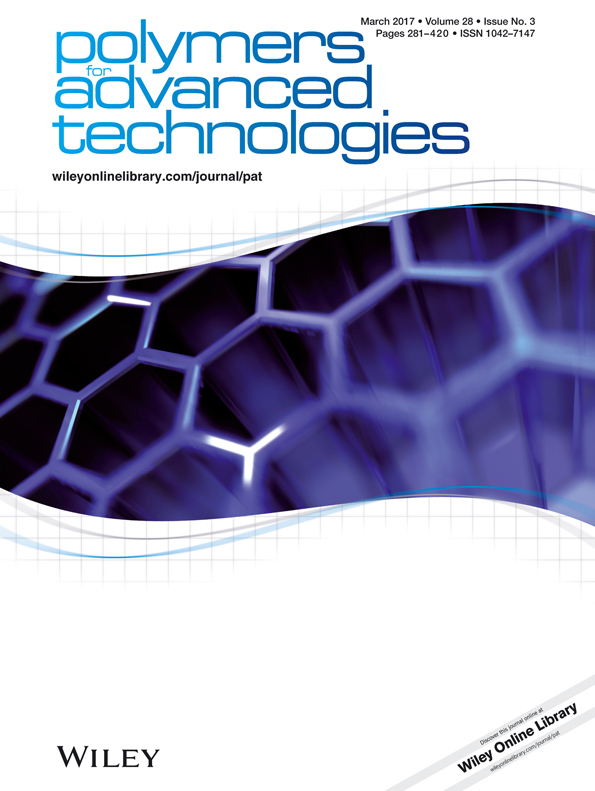Synthesis, characterization, thermal, electrical and magnetic properties of polyaniline composites with rare earth gadolinium coordination complex
Abstract
Novel polyaniline/gadolinium (PANI/Gd) composites were successfully synthesized by “in-situ” polymerization at the presence of rare earth Gd coordination complex and D-tartaric acid (an a dopant). It is rarely to find the studies on related field to add rare earth Gd coordination complex as fillers. Fourier transform infrared (FTIR) spectra, X-ray diffraction (XRD) and scanning electron microscope (SEM) were used to examine the structure and surface appearance characterization of materials. The thermal stability performance of composites was investigated by thermogravimetry and derivative thermogravimetry (TG-DTG). Electrochemical performance was measured by cyclic voltammetry (CV), electrochemical impedance spectroscopy (EIS) and galvanostatic charge–discharge test. The magnetic property was investigated by physical property measurement system (PPMS). The structure and surface appearance characterization and the magnetic properties jointly demonstrate the polymerization of rare earth Gd coordination complex and PANI–D-tartrate (DTA) not only simple physical mixing but also chemical mixing. TG-DTG analysis suggests that thermal stability of PANI/Gd composites is higher than that of PANI–DTA. Electrochemical performance tests and SEM indicate that the composite (PANI/Gd = 3.3:1,mass ratio) has the most regular morphology and best specific capacitance. The magnetization of the composite (PANI/Gd = 3.3:1,mass ratio)is evidently smaller compared with PANI–DTA and rare earth Gd coordination complex. Copyright © 2016 John Wiley & Sons, Ltd.




